
JOURNAL OF INTERVENTIONAL CARDIAC ELECTROPHYSIOLOGY
Scope & Guideline
Driving Excellence in Interventional Cardiology
Introduction
Aims and Scopes
- Atrial Fibrillation Management:
Significant emphasis on catheter ablation techniques for atrial fibrillation (AF), including various energy sources like cryoablation and radiofrequency ablation, as well as innovative technologies such as pulsed-field ablation. - Ventricular Arrhythmias:
Research includes studies on the mechanisms, treatment, and outcomes of ventricular arrhythmias, with a focus on catheter ablation strategies and device interventions. - Electrophysiological Mapping and Imaging:
Utilization of advanced mapping technologies, including high-density mapping and 3D electroanatomical mapping, to enhance procedural outcomes and understand arrhythmia substrates. - Innovative Techniques and Technologies:
Exploration of new technologies such as leadless pacemakers, subcutaneous implantable cardioverter-defibrillators (ICDs), and novel ablation devices, aimed at improving patient safety and procedural efficacy. - Patient Outcomes and Quality of Life:
Studies assessing the impact of electrophysiological interventions on patient-reported outcomes, quality of life, and long-term health metrics post-procedure. - Multidisciplinary Approaches:
Research that highlights the importance of collaboration across specialties to improve outcomes in complex cases, including studies on the integration of anesthesia, imaging technologies, and surgical techniques.
Trending and Emerging
- Pulsed-Field Ablation Techniques:
This emerging technology is gaining traction as a potential alternative to traditional ablation methods, with studies focusing on its safety, efficacy, and mechanisms of action. - Zero Fluoroscopy Techniques:
A growing emphasis on techniques that minimize or eliminate fluoroscopy during electrophysiological procedures, promoting patient safety and reducing radiation exposure. - Patient-Centric Research:
An increasing number of studies explore the impact of electrophysiological interventions on patient quality of life, emphasizing the importance of patient-reported outcomes in evaluating treatment success. - Artificial Intelligence and Machine Learning Applications:
The application of AI and machine learning in cardiac electrophysiology is emerging, with studies aimed at improving diagnostic accuracy and procedural efficiency through advanced data analysis. - Comprehensive Care Models:
Research is trending towards multidisciplinary approaches that integrate various specialties in managing complex arrhythmias, reflecting a holistic view of patient care. - Use of Advanced Imaging Techniques:
An increased focus on the integration of advanced imaging modalities, such as intracardiac echocardiography and cardiac MRI, to enhance procedural guidance and outcomes.
Declining or Waning
- Traditional Pharmacotherapy for Arrhythmias:
There appears to be a waning focus on conventional antiarrhythmic drug therapies, as newer interventional techniques gain prominence, particularly in the management of atrial fibrillation and ventricular arrhythmias. - Invasive Diagnostic Procedures:
The reliance on invasive diagnostic techniques such as electrophysiological studies has decreased as non-invasive imaging and mapping technologies become more sophisticated and widely adopted. - Fixed-Protocol Ablation Techniques:
A decline in research focusing on rigid, one-size-fits-all ablation protocols, as personalized and precise approaches tailored to individual patient anatomy and arrhythmia mechanisms gain traction. - Long-Term Follow-Up Studies:
Fewer publications emphasize long-term follow-up studies on established techniques, possibly due to the increasing interest in immediate procedural success and patient-centered outcomes.
Similar Journals

INTERNATIONAL JOURNAL OF GYNECOLOGICAL CANCER
Elevating the standard of gynecological cancer research.INTERNATIONAL JOURNAL OF GYNECOLOGICAL CANCER, published by BMJ PUBLISHING GROUP, is a leading interdisciplinary journal focused on advancing research and clinical practice in the field of gynecological oncology. With an ISSN of 1048-891X and an E-ISSN of 1525-1438, the journal has established itself as a vital resource since its inception in 1991, covering cutting-edge advancements through 2024 and beyond. The journal holds esteemed rankings, including Q1 in Obstetrics and Gynecology and Q2 in Oncology, highlighting its influence and high citation impact within the medical community. Its Scopus rankings underscore its prominence, placing it among the top 13% of journals in Obstetrics and Gynecology and the top 27% in Oncology. Although it does not currently offer Open Access options, the journal provides a platform for researchers, clinicians, and students to share significant findings and developments that shape the future of gynecological cancer research and treatment. The INTERNATIONAL JOURNAL OF GYNECOLOGICAL CANCER stands as a significant pillar in the ongoing effort to improve patient outcomes and foster innovation in this critical area of healthcare.
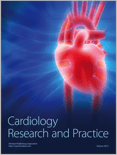
Cardiology Research and Practice
Connecting researchers and practitioners for impactful change.Cardiology Research and Practice is a leading academic journal dedicated to advancing knowledge in the fields of cardiology and cardiovascular medicine. Published by HINDAWI LTD, this journal has been an inclusive platform for open access research since 2009, facilitating the dissemination of high-quality studies that contribute to the global scientific community. With an impact factor placing it in Q2 of its category in 2023, it underscores its importance in delivering innovative insights and discoveries that shape clinical practices and policies. The journal covers a broad scope of topics including, but not limited to, cardiovascular disease prevention, innovative treatment modalities, and emerging technologies, appealing to researchers, healthcare professionals, and students alike. Located in the United States with its international reach, Cardiology Research and Practice serves as a critical resource for those dedicated to improving patient outcomes and advancing the field of cardiology.

JOURNAL OF CARDIOVASCULAR ELECTROPHYSIOLOGY
Transforming Knowledge into Clinical ExcellenceJOURNAL OF CARDIOVASCULAR ELECTROPHYSIOLOGY, published by Wiley, stands at the forefront of the fields of Cardiology and Cardiovascular Medicine, boasting an impressive Impact Factor that reflects its scholarly influence. With a strong focus on innovative research, this esteemed journal has been a vital resource for advancing our understanding of electrophysiological concepts since its inception in 1990. As a Q1 journal in both Cardiology and Physiology (medical) as of 2023, it provides a platform for cutting-edge discoveries and comprehensive reviews that cater to the academic and clinical needs of researchers, practitioners, and students alike. The journal features rigorous peer-reviewed articles that delve into various aspects of cardiovascular health, enhancing both theoretical knowledge and clinical application. Although it does not offer open access, it remains a key resource for those engaged in cardiovascular research, published quarterly through 2024 to ensure timely dissemination of high-quality findings.
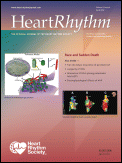
HEART RHYTHM
Connecting research and practice in heart health.HEART RHYTHM is a leading academic journal published by Elsevier Science Inc, focusing on cutting-edge research in the field of cardiology and cardiovascular medicine. Established in 2004 and continuing its impactful journey through 2024, this journal holds an esteemed position within the academic community, boasting a 2023 Q1 ranking in both Cardiology and Cardiovascular Medicine and Medical Physiology, indicating its significant influence and contribution to these areas of study. With a commendable Scopus ranking—ranked #34 out of 387 in Cardiology and #11 out of 113 in Physiology—HEART RHYTHM is recognized for publishing high-quality research that drives advancements in understanding heart rhythms and associated medical conditions. Although it does not support open access, the journal remains accessible to professionals, researchers, and students, serving as a vital resource for the latest findings and theories in cardiovascular health. Invested in the mission to enhance knowledge and improve clinical practices, HEART RHYTHM stands as an essential publication for those aspiring to excel in the fields of cardiology and cardiovascular research.

Journal of Vascular Surgery-Venous and Lymphatic Disorders
Transforming research into practice for vascular professionals.The Journal of Vascular Surgery-Venous and Lymphatic Disorders, published by Elsevier, is a distinguished peer-reviewed journal dedicated to advancing the knowledge and practice of vascular surgery with a particular focus on venous and lymphatic conditions. With an ISSN of 2213-333X and a robust impact factor, this journal ranks Q2 in Cardiology and Cardiovascular Medicine and Q1 in Surgery, reflecting its high relevance and contribution to the field. Covering a wide spectrum of topics from innovative surgical techniques to the latest developments in venous and lymphatic disorders, the journal serves as a vital resource for researchers, clinicians, and students alike. It not only disseminates cutting-edge research but also promotes best practices and interdisciplinary collaboration within the cardiovascular domain. The journal is accessible to a global audience, ensuring that impactful findings reach practitioners and researchers everywhere, further elevating the standards of patient care and surgical excellence.

HEART AND VESSELS
Fostering Knowledge for a Stronger Cardiovascular FutureHEART AND VESSELS is a prominent peer-reviewed journal published by SPRINGER, dedicated to advancing the fields of cardiology and cardiovascular medicine. With its ISSN 0910-8327 and E-ISSN 1615-2573, this esteemed journal encompasses a broad range of topics pertinent to heart health, vascular function, and associated therapies, making it an essential resource for researchers, clinicians, and healthcare professionals alike. Based in Japan and operating since 1985, HEART AND VESSELS has consistently maintained a Q2 ranking in the 2023 category quartiles, highlighting its relevance and impact in the cardio domain. Although it does not offer open access, the journal ensures high-quality publications that contribute significantly to the academic and clinical understanding of cardiovascular health. With over three decades of continuous scholarly contribution, HEART AND VESSELS serves as a vital platform for disseminating cutting-edge research and fostering innovative practices in the management of cardiovascular diseases.
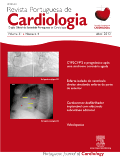
Revista Portuguesa de Cardiologia
Transforming cardiovascular medicine with cutting-edge research.Revista Portuguesa de Cardiologia, published by Elsevier España SLU, stands as a pivotal resource in the realm of Cardiology and Cardiovascular Medicine. With its origins tracing back to 1970, this journal has cultivated a robust academic presence, achieving a 2023 Q3 ranking in its category, and currently holding a position of #220 out of 387 on the Scopus rankings, placing it within the 43rd percentile of its field. This open access journal, available since 2011, aims to disseminate high-quality research and insights relevant to contemporary cardiovascular issues. Its commitment to accessibility and knowledge exchange enhances its importance for clinicians, researchers, and students alike, fostering a more informed community in the fight against cardiovascular diseases. Operating from its base in Barcelona, Spain, the journal welcomes contributions that further the understanding and treatment of heart conditions, contributing significantly to the advancement of cardiovascular health.
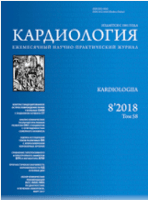
KARDIOLOGIYA
Empowering the Future of Heart Disease ManagementKARDIOLOGIYA is a renowned academic journal in the field of cardiology, published by the Russian Heart Failure Society. Since its inception in 1961, this journal has been dedicated to disseminating cutting-edge research in cardiovascular medicine, contributing to the global understanding of heart-related diseases and their management. With a significant publication history that spans over six decades, KARDIOLOGIYA provides a platform for both established researchers and emerging scholars to publish their findings. Despite its current Q4 category ranking in the 2023 Cardiology and Cardiovascular Medicine category, the journal plays a crucial role in promoting regional insights and advancements in cardiology, while striving towards higher visibility and impact within the academic community. While not an open-access journal, the journal is accessible to institutions and professionals in the Russian Federation and beyond, fostering collaboration and knowledge sharing among healthcare professionals. With a Scopus rank of #259 among 387 journals, it is well-positioned to enhance discourse in the field and support the development of innovative approaches to cardiovascular care.

Acta Phlebologica
Advancing Understanding in Venous HealthActa Phlebologica, published by EDIZIONI MINERVA MEDICA, is a pivotal journal dedicated to the field of cardiovascular medicine, specifically focusing on the complexities of venous diseases and phlebology. With an ISSN of 1593-232X and an E-ISSN of 1827-1766, this journal serves as a platform for researchers, clinicians, and students to disseminate their findings and insights relevant to venous health. While it currently holds a Q4 status in the Cardiology and Cardiovascular Medicine category, its emphasis on critical aspects of clinical practice and research aims to improve understanding and management of venous disorders. The journal, which has been in circulation since 2013, operates on a subscription basis, ensuring access to high-quality, peer-reviewed content. As the readership grows, Acta Phlebologica aspires to enrich knowledge within the cardiovascular community, fostering advancements in patient care and innovative research.
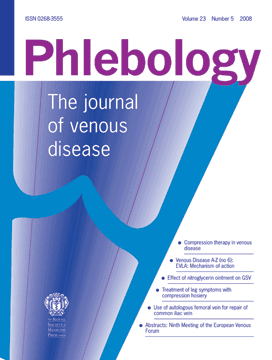
PHLEBOLOGY
Connecting researchers and practitioners in cardiovascular excellence.PHLEBOLOGY is a renowned academic journal published by SAGE Publications Inc. that focuses on the evolving field of phlebology and related cardiovascular issues. With an ISSN of 0268-3555 and an E-ISSN of 1758-1125, this journal serves as a pivotal platform for disseminating high-quality research, clinical findings, and innovative practices in venous disease management and treatment. Operating from the United Kingdom, tasked with a mission to advance the scientific understanding and clinical practice surrounding venous disorders, PHLEBOLOGY is currently ranked in the Q3 category for both Cardiology and Cardiovascular Medicine, as well as in Medicine (miscellaneous) for 2023. Its Scopus rank of #192 out of 387 highlights its commitment to excellence, ensuring that it reaches a respectable 50th percentile within its fields. Although it does not offer open access, the journal invites contributions from researchers, healthcare professionals, and students, fostering a community dedicated to improving patient outcomes and promoting evidence-based practices in venous health.